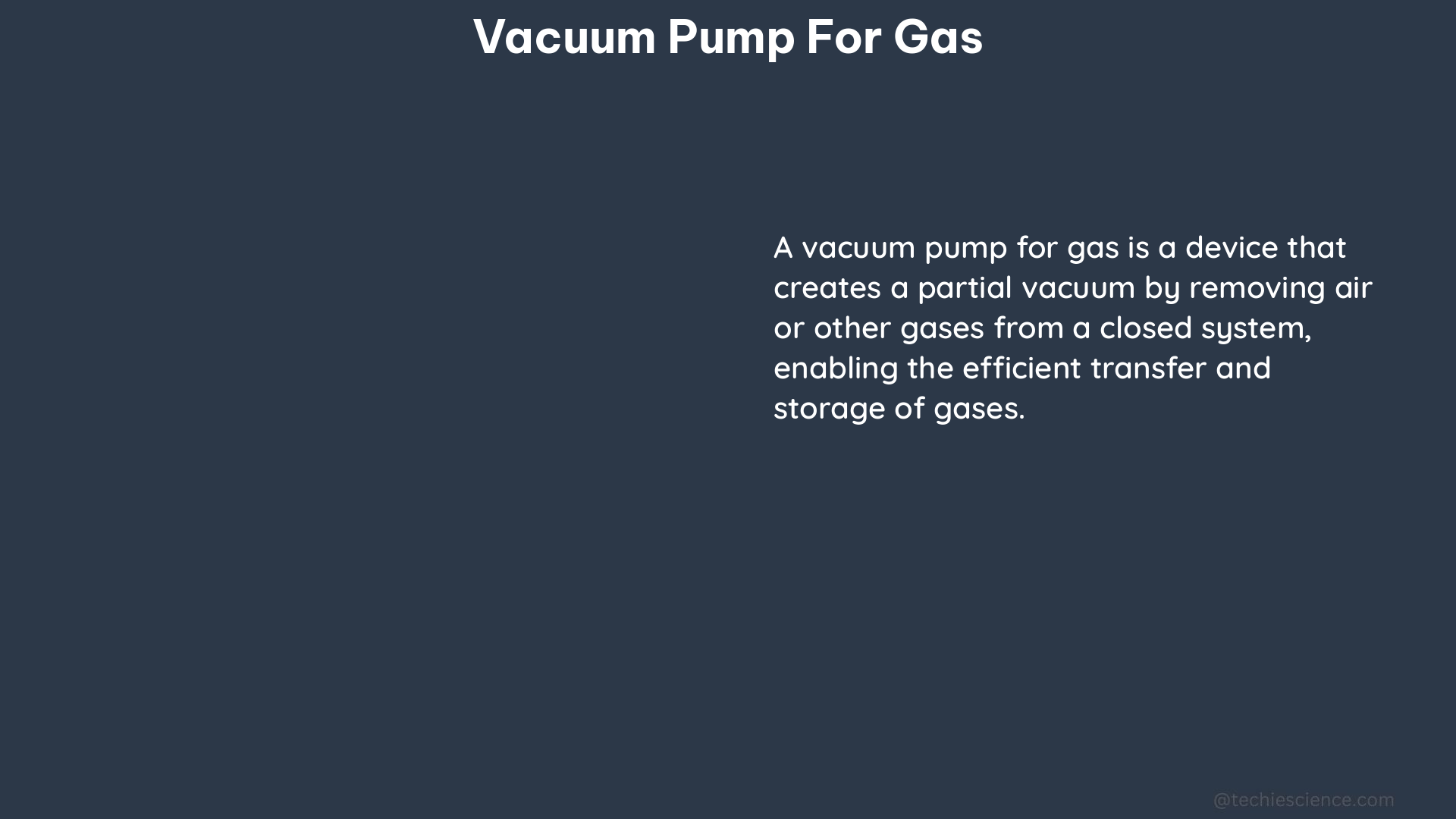Vacuum pumps are essential components in various industrial and scientific applications, from semiconductor manufacturing to particle accelerators. When it comes to vacuum pumps for gas, understanding the technical specifications, performance characteristics, and testing procedures is crucial for ensuring optimal system performance. In this comprehensive guide, we will delve into the intricate details of vacuum pumps for gas, providing you with a valuable resource to navigate the complexities of this technology.
Technical Specifications of Vacuum Pumps for Gas
Pumping Speed
Pumping speed is a critical factor in determining the performance of a vacuum pump. It is measured in liters per second (L/s) or cubic meters per hour (m³/h) and represents the volume of gas that the pump can evacuate under specific conditions. For example, an oil-lubricated rotary vane pump might have a pumping speed of 10-100 m³/h, while a dry scroll pump could have a pumping speed of 5-20 m³/h. The choice of pump depends on the desired vacuum level, the volume of the chamber, and the type of gas being evacuated.
Conductance
Conductance is a measure of how well a system conducts gas. It is measured in siemens or mhos and affects the overall performance of the vacuum system. For instance, a vacuum pipe with a conductance of 0.5 mhos would reduce the effective pumping speed of a connected pump by half. Proper design and selection of vacuum components, such as pipes, valves, and fittings, are crucial to maintaining high conductance and maximizing the pump’s efficiency.
Thermal Effects
Thermal effects can significantly impact the performance of a vacuum pump. As gas is removed from a volume, the internal energy and temperature of the remaining gas change, affecting the pumping speed. In slow evacuation processes, the temperature drop is compensated by heat transfer from the chamber walls. However, if the process is faster than a few minutes, the gas that has to be pumped will gradually cool, reducing the effectiveness of the system’s pumping speed. Understanding and accounting for these thermal effects is essential for optimizing the vacuum system’s performance.
Desorption Rates
Desorption is the release of adsorbed substances from a surface. All materials in a vacuum release gases from their surfaces, with water vapor being the primary component. Lubricants can also impact desorption rates. Desorption is the dominant source of gas in high and ultra-high vacuum conditions, and it can significantly affect the ultimate vacuum level achievable by the system. Careful selection of materials and proper conditioning of the vacuum chamber can help minimize desorption and improve the overall vacuum performance.
Testing the Functionality of a Vacuum Pump for Gas

To ensure the proper functioning of a vacuum pump for gas, you can perform a series of tests to evaluate its performance.
Function Test
A function test is a quick and easy way to check the pump if leakage or loss of vacuum is suspected, especially when no vacuum gauge is available. This test is an indicator of whether the valves and diaphragms in a diaphragm pump are intact. To perform a function test, follow these steps:
- Disconnect the pump from the vacuum system.
- Cover the inlet port of the pump with your hand or a suitable cover.
- Start the pump and observe the pump’s behavior. A properly functioning pump should create a noticeable suction and vibration.
- If the pump does not create a noticeable suction or vibration, it may indicate a problem with the pump’s internal components, and further investigation or repair may be necessary.
Vacuum Measurement
For a more precise evaluation of the vacuum pump’s performance, you can use calibrated gauges to measure the pump’s ultimate vacuum. Depending on the type of pump, you can use different measuring devices:
- Diaphragm Pumps: Use the DVR2 pro vacuum gauge to measure the ultimate vacuum of diaphragm pumps.
- Rotary Vane Pumps: Use the VACUU·VIEW extended vacuum gauge to measure the ultimate vacuum of rotary vane pumps.
These calibrated gauges provide accurate readings of the pump’s ultimate vacuum, allowing you to assess the pump’s functionality and identify any potential issues.
By understanding the technical specifications and testing the functionality of vacuum pumps for gas, you can ensure the optimal performance of your vacuum system, minimize downtime, and maintain the integrity of your critical applications.
References:
- Calculating evacuation time for vacuum chambers – Leybold, https://www.leybold.com/en-us/knowledge/blog/calculating-evacuation-time-for-vacuum-chambers
- How to test the vacuum of your pump – VACUUBRAND, https://www.vacuubrand.com/news/bloguebersicht/checking-the-functionality
- VACUUM GUIDE UNDERSTANDING THE BASICS, https://www.tecalemitflow.fi/Download/28655/Edwards%20Vacuum%20Guide%20-%20Understanding%20the%20basics.pdf

The lambdageeks.com Core SME Team is a group of experienced subject matter experts from diverse scientific and technical fields including Physics, Chemistry, Technology,Electronics & Electrical Engineering, Automotive, Mechanical Engineering. Our team collaborates to create high-quality, well-researched articles on a wide range of science and technology topics for the lambdageeks.com website.
All Our Senior SME are having more than 7 Years of experience in the respective fields . They are either Working Industry Professionals or assocaited With different Universities. Refer Our Authors Page to get to know About our Core SMEs.